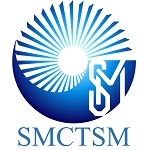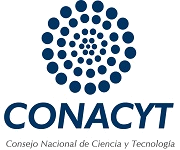Abrasive wear study of an acrylonitrile butadiene rubber (NBR) rotary seal in dry and muddy contact using a micro-abrasion tester
DOI:
https://doi.org/10.47566/2017_syv30_1-010001Keywords:
wear, elastomers, seals, two-body abrasion, three-body abrasionAbstract
Rotary dynamic seals are widely used in machinery in order to retain fluids and to exclude external contaminants by allowing the free shaft movement. One of the most recurrent failure of seals is caused by abrasive wear under prolonged sliding contact. It is mainly produced either by partial dry running (two-body abrasion) and/or by interacting with abrasive hard fine particles, which are immersed in the fluids generating three-body abrasive wear. This work aims to study both types of abrasion using a micro-scale abrasion tester. For this, small samples were extracted from an Acrylonitrile Butadiene Rubber (NBR) lip of an actual dynamic seal. The testing was conducted in dry contact to generate two-body abrasive wear, as well as in a wet/muddy environment in order to reproduce three-body abrasion. The load was selected in order to approach the actual mean contact pressure of seals against rotary shafts. Hence, a stress relaxation test of the NBR samples was carried out to characterize the viscoelastic behavior. The wear scar morphologies and wear progression were analyzed in detail by optical microscopy, SEM analysis and optical profilometry. Finally, the experimental test was suitable to reproduce two-body and three-body abrasion on the samples since the particular wear patterns on small wear scars were obtained by short experiments.References
. F. Guo, X. Jia, W. Longke, R.F. Salant, Y. Wang, J Tribol-T ASME. 136(4), 1 (2014).
DOI: 10.1115/1.4027623
. R. Flitney, Seals and Sealing Handbook, 6th Edition, (Elsevier Science Publishers Limited, 2014) p. 369-409.
ISBN: 978-0-08-099416-1
http://www.sciencedirect.com/science/book/9780080994161
. M. Gawlinski, ACME. 7(4), 57 (2007).
DOI: 10.1016/S1644-9665(12)60225-8
. R. Flitney, Seals and Sealing Handbook, 6th Edition, (Elsevier Science Publishers Limited, 2014) p. 437-474.
ISBN: 978-0-08-099416-1
http://www.sciencedirect.com/science/book/9780080994161
. S.W. Zhang, Wear. 158, 1, (1992).
DOI:10.1016/0043-1648(92)90026-5
. S.W. Zhang, Tribol. Int. 22(2), 143 (1989).
DOI: 10.1016/0301-679X(89)90175-8
. H. Liang, Wear. 266, 288 (2009).
http://dx.doi.org/10.1016/j.wear.2008.07.006
. L.I. Farfan-Cabrera, E.A. Gallardo-Hernández, J.B. Pascual-Francisco, C.D. Resendiz-Calderon, C. Sedano de la Rosa, Polym. Test. 53, 116 (2016).
http://dx.doi.org/10.1016/j.polymertesting.2016.04.021
. L.I. Farfan-Cabrera, E. Gallardo-Hernández, SAE technical papers. 2016-01-0496 (2016).
DOI: 10.4271/2016-01-0496
. K.L. Rutherford, I.M. Hutchings, J. Test Eval, 25, 250 (1997).
https://doi.org/10.1520/JTE11487J
. R.I. Trezona, I.M. Hutchings, Wear, 225-229, 205 (1999).
http://dx.doi.org/10.1016/S0043-1648(99)00183-0
. T. Kunstfeld, W. Haas, Sealing technology, 2005 (7) 5 (2005).
http://dx.doi.org/10.1016/S1350-4789(05)70738-8
. T. Parenteau, E. Bertevas, G. Ausias, R. Stocek, Y. Grohens, P. Pilvin, Mech. Mater. 71, 114 (2014).
http://dx.doi.org/10.1016/j.mechmat.2013.06.010
. P.H. Shipway, N.K. Ngao, Wear. 255, 742 (2003).
http://dx.doi.org/10.1016/S0043-1648(03)00106-6
. C.Y. Lee, C.S. Lin, R.Q. Jian, C.Y. Wen, Tribol. Int. 39, 915 (2006).
http://dx.doi.org/10.1016/j.triboint.2005.09.002
. K. L. Johnson, Contact Mechanics, (Cambridge University Press, 1985) p. 84-106.
Published
Issue
Section
License
Copyright (c) 2017 The authors. Licensee SMCTSM.

This work is licensed under a Creative Commons Attribution 4.0 International License.
©2025 by the authors; licensee SMCTSM, Mexico. This article is an open access article distributed under the terms and conditions of the Creative Commons Attribution license (http://creativecommons.org/licenses/by/4.0/).





